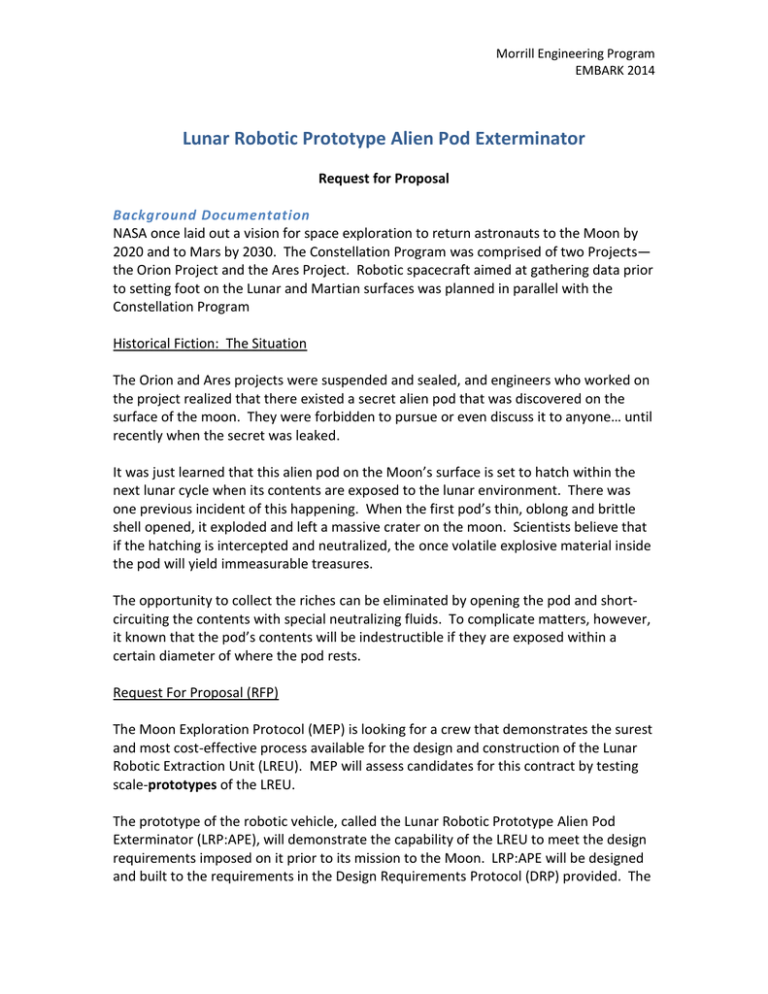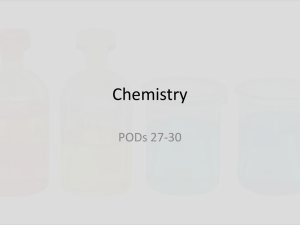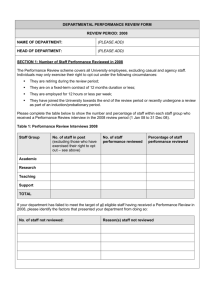
Morrill Engineering Program
EMBARK 2014
Lunar Robotic Prototype Alien Pod Exterminator
Request for Proposal
Background Documentation
NASA once laid out a vision for space exploration to return astronauts to the Moon by
2020 and to Mars by 2030. The Constellation Program was comprised of two Projects—
the Orion Project and the Ares Project. Robotic spacecraft aimed at gathering data prior
to setting foot on the Lunar and Martian surfaces was planned in parallel with the
Constellation Program
Historical Fiction: The Situation
The Orion and Ares projects were suspended and sealed, and engineers who worked on
the project realized that there existed a secret alien pod that was discovered on the
surface of the moon. They were forbidden to pursue or even discuss it to anyone… until
recently when the secret was leaked.
It was just learned that this alien pod on the Moon’s surface is set to hatch within the
next lunar cycle when its contents are exposed to the lunar environment. There was
one previous incident of this happening. When the first pod’s thin, oblong and brittle
shell opened, it exploded and left a massive crater on the moon. Scientists believe that
if the hatching is intercepted and neutralized, the once volatile explosive material inside
the pod will yield immeasurable treasures.
The opportunity to collect the riches can be eliminated by opening the pod and shortcircuiting the contents with special neutralizing fluids. To complicate matters, however,
it known that the pod’s contents will be indestructible if they are exposed within a
certain diameter of where the pod rests.
Request For Proposal (RFP)
The Moon Exploration Protocol (MEP) is looking for a crew that demonstrates the surest
and most cost-effective process available for the design and construction of the Lunar
Robotic Extraction Unit (LREU). MEP will assess candidates for this contract by testing
scale-prototypes of the LREU.
The prototype of the robotic vehicle, called the Lunar Robotic Prototype Alien Pod
Exterminator (LRP:APE), will demonstrate the capability of the LREU to meet the design
requirements imposed on it prior to its mission to the Moon. LRP:APE will be designed
and built to the requirements in the Design Requirements Protocol (DRP) provided. The
Morrill Engineering Program
EMBARK 2014
DRP provides a logistical framework including budget limitations and milestones to
meet.
Contractor’s proposals for LRP:APE shall be limited to a maximum of five (5) pages that
addresses the content provided in the Proposal Outline provided in Attachment A of this
RFP. The proposals shall be submitted electronically to mep@engineering.illinois.edu
no later than 8:00 A.M. Central Time on August 18, 2014.
Authority to Proceed
Authority to Proceed (ATP) will be granted at 1:30 P.M. the same day. Each contractor
receiving approval will be provided with at least $100 allowance to represent the
maximum cost for the extraction unit.
Material Acquisition and Angel Investors
All materials of the Orion and Ares projects at the appropriate scale are warehoused at a
super-secret location disguised as a Walmart. The project team will assign one member
to be responsible for the acquisition of the materials listed on their Budget and
Materials Assessment form that is part of their RFP. MEP-trained judges will escort all
designates to the warehouse for acquisition. All material shall be acquired within a 40minute period. The escort will initiate the countdown. Teams are to report to the
check-out lanes before the designated end-time.
Anything for sale at this warehouse may be placed on the Bill of Materials. The MEP
reserves the right to veto the purchase of inappropriate material.
Final Evaluation
Performance throughout the contract will be compared between all proposing
Contractors. Each team will present their proposal to MEP and other contractors for a
maximum of 5 minutes. The presentation should include the proposal, design objectives
and other relevant information deemed necessary. The presentation will carry the most
weight for evaluation. The success of the prototype will be evaluated by determining
whether the function can be replicated. Unsuccessful designs will be evaluated by its
potential for modifications.
The best performing Contractor will be awarded the contract to design, develop, test,
and launch on its mission to the Moon. Prototype demonstrations will be held at 10:30
A.M. Central Time on August 19, 2014. MEP will award winning team members with
official paraphernalia.
Morrill Engineering Program
EMBARK 2014
Attachment A
Proposal Outline
Due: 8:00 A.M. August 18, 2014
I.
Introduction
The Contractor shall provide a brief overview of their intent to submit a proposal to satisfy this
RFP. This section should include a brief description of the management team, the proposed
design, and the plan to meet the test objectives. They should also provide marketing materials,
logos, and mission statement that will properly introduce their company.
II.
Program Management and Systems Engineering
The Contractor shall provide a description of the Program Management philosophy which
includes submission of a proposed schedule of work along with an organizational chart with
roles and responsibilities identified for each member. Design subsystems shall be proposed with
organizational personnel allocated to each subsystem.
III.
Extraction Unit
The Contractor shall provide an overall description of the proposed extraction unit. Its overall
function shall be described showing anticipated compliance to the top-level requirements
requested of the judges. A description of the vehicle subsystems defined in section II above
shall also be provided. An overall three-dimensional sketch, drawing, photo, or computer-aided
design model shall be included within this section. Detailed descriptions of sub-systems are
required.
IV.
Budget and Materials Assessment
One of the most important and critical parts of this proposal is the teams itemized budget
outline and bill of materials. Upon submission of this proposal, each team will be provided with
seed funding of $100. The team is restricted on what they can use the funding for therefore
careful thought and consideration should be used in this section.
V.
Test Program
The Contractor shall provide a proposed test program that will provide the funders sufficient
confidence that progress is taking place. A brief description of the tests to be performed to
design, fabricate, and successfully operate the robotic lander shall be provided. Test objectives
and results including time, date, location shall be recorded in table form.
VI.
Conclusion
The Contractor shall include concluding remarks within the proposal.
Morrill Engineering Program
EMBARK 2014
Lunar Robotic Prototype Alien Pod Exterminator
Design Requirements
1.0
Introduction
This document provides the requirements for the design and operation of prototype to
be used as stepping stones for designing a suitable emergency vehicle that will perform
a specific task on the surface of the Moon.
2.0
Applicable Documents
The following documents provide additional information to the extent specified herein.
Should a conflict exist between the requirements of this document and the
requirements within the documents listed below, the requirements in this document
shall take precedence.
1. Request for Proposal
2. Design Project Roles
3.0
Lunar Robotic Prototype Alien Pod Exterminator
Requirements in this document are written for the Lunar Robotic Prototype Alien Pod
Exterminator. The architecture of the design shall determine the allocation of the
requirements to the subsystems.
3.1
Robotic System Requirements
3.1.1 The robotic system shall define a square operating perimeter measuring a
minimum of 10 feet long by 10 feet wide centered at the alien pod (Ground Zero—GZ).
This may be done at set-up.
3.1.2 The system shall minimize the number of parts used for its overall construction.
3.1.3 The system shall minimize the total mass of its components.
3.1.4 The system shall minimize manual intervention once the prototype test is
initiated.
3.2
Mechanism Requirements
3.2.1 The mechanism shall be capable of interfacing with a Customer-provided, alien
pod (in the form of an egg) situated at Ground Zero (GZ) without manual intervention.
3.2.2 The mechanism shall be capable of exposing the alien pod’s contents a minimum
of 3 linear feet away from GZ, in any direction.
Morrill Engineering Program
EMBARK 2014
3.2.3 The system shall be capable of introducing neutralizing fluids (in the form of
water) to the exposed contents of the alien pod. Any quantity will suffice.
3.3
Structural Requirements
3.3.1 The entire system shall fit within a maximum of 1 cubic foot volume for storage
and transportation purposes. The mechanism may be expanded to any operational size
after a 5- minute set-up period at the start of the demonstration.
3.3.2 Once set-up, the system shall contain or produce its own energy such that
manual intervention is eliminated.
3.3.3 For the sake of demonstration, the system may be tethered for the purpose of
simulating remote commands. The tether(s) may not directly influence the robot’s
physical position, bearing, or function.
3.4
Payload Requirements
3.4.1 The mechanism shall transport the specified payload (alien pod) to the
established perimeter.
3.4.2 The mechanism shall transport the Customer-provided, alien pod without
causing irreparable damage (in the form of a crack) within the minimum diameter of 3
feet. Doing so will invalidate the design and will activate the alien pod hatching. If this
happens, the world is doomed.
3.4.3 The mechanism shall be able to expose the contents of the alien pod outside the
minimum diameter of 3 feet.
3.5
Neutralizing Fluid Requirements
3.5.1 Any traceable amount of Neutralizing Fluid (NF) in contact with the alien pod
contents outside of the minimum perimeter would sufficiently inactivate the alien pod’s
harmful effects and transform them to riches beyond your imagination.
3.5.2 Any contact of the NF with the content of the alien pod contents within the
minimum perimeter will invalidate the design and probably annihilate the moon and
destroy humanity.
3.5.3 No more than one (1.0) fluid ounce of NF (in the form of potable water) shall be
used in the prototype.
3.5.4 The NF may be set up anywhere within the established perimeter but may not
be introduced to the alien pod during the set-up.
3.6
Electrical, Power, and Control Requirements
Morrill Engineering Program
EMBARK 2014
3.6.1 The system shall be commanded from outside of the established perimeter and
controlled to any location within the established perimeter.
3.6.2 The mechanism control system shall accommodate a controller or controllers
without hindering the lander’s operation throughout the established perimeter.
3.6.3 The system shall have sufficient power to fulfill all of its specified requirements
during the prototype test.
4.0
Budget
4.1
Bill of Materials
4.1.1 Contractors should outline their comprehensive expenses on their Bill of
Materials
4.1.2 The itemized list should sum all expenses with appropriate room for notations by
the judges.
4.1.3 The design should be able to function within a budget of $100 as provided by
MEP
4.1.4 The designated team member will have to make on-the-spot decisions about
where to spend their allotment should the actual costs of the items be over $100
4.2
Assumptions and Penalties
4.2.1 Teams should list all materials and services that are assumed. These
assumptions include access to computing equipment, overhead building access (lighting,
lab space, etc), and simple stationary such as notebook paper, pens, and pencils. Other
items including tools and consulting fees should not be assumed.
4.2.2 MEP reserves the right to impose penalties for introducing additional materials
to the design project.
5.0
All Rights Reserved
MEP and its affiliates reserve the right to make fair modifications of this design project
for the greater benefit, safety, and enjoyment of all involved.
Morrill Engineering Program
EMBARK 2014
Building Materials Checklist
ID
Qty.
1
2
3
4
1
8
1
2
Part No
1234-568-9
123145
15IN-84A0-1
Part Name
Cost
Swingline stapler
Wooden dowels; 1/8”Dx 2’
Wood glue
Iron-Man toy
$12.95
$6.31
$2.49
$3.99
Note
Index
A
B
C
Subtotal:
Tax:
Total:
Note
Index (from
Description
above)
A
B
Swingline stapler tension springs are useful for maintaining tension for the
catapult. Other brands may be substituted if they contain the tension
spring.
Wooden dowels will be cut to 6” pieces
C
Toy contains trigger mechanism for use in this project
Morrill Engineering Program
EMBARK 2014
Lunar Robotic Prototype Alien Pod Exterminator
Design Project Roles
President / CEO
(Program Manager)
VP of Operations / CFO
(Business Manager)
Communications
Manager
Budget Manager
VP & Chief Technology
Officer (CTO)
(Engineering Manager)
Design Engineer
Research &
Development
President/CEO
•
•
•
Coordinates and approve the leadership strategy of the company
Signs off on values statement.
Resolves team conflicts and holds swing vote on tie decisions
Supervises other managers
With other executives, approved to communicate with those outside
the company
Provide Leadership update to Judges
Notes:
Look at the big picture
What is best for your company and employees?
What is the best way to work with others to divide project into
manageable pieces
Morrill Engineering Program
EMBARK 2014
Corporate Operations
V.P. of Business / CFO
•
•
•
Coordinates and approves the business strategy (non-engineering) aspect of
the team
Primary liaison to all non-technical team members
Ensures that all roles in non-technical team are followed
With other executives, approved to communicate with those outside
the company
Provides Business updates to President
Notes:
Consider the progress and needs of other companies
Determine the scope and feasibility of the design
Is the strategy flexible enough to meet design challenges?
Communications Manager
•
•
•
Coordinate and approve the creative and marketing strategy of the company
Signs off on Slogans, Advertisements, and Company name and logo
Reviews and approves language used in any presentations given
outside the company
Leads brainstorming sessions
Provide marketing update to the V.P. of Business
Notes:
How will the design team be perceived?
Is the company’s message clear and concise?
If all companies meet design objective, is marketing sufficient to
motivate judges?
Budget manager
•
•
•
Coordinate and approve the financial strategy of the company
Signs off on purchases, equipment usage, and financial bids.
Keeps track and reports on all the company’s assets
Provide financial update to CFO
Notes:
Keep track of all expenses and needs
Control assumptions made by others
Morrill Engineering Program
EMBARK 2014
Engineering Operations
Chief Technology Officer (CTO)
•
•
•
Coordinates and approves the Engineering strategy of the company
Signs off on design concepts, prototype, and engineering documents.
Disseminates information to teammates and provides direction to
innovations
With other executives, approved to communicate with those outside
the company
Provide Engineering update to CEO
Notes:
Consider the progress and needs of other companies
Determine the scope and feasibility of the design
Is the strategy flexible enough to meet design challenges?
Lead Design Engineer
•
•
•
Primary responsibility is to manage and implement the design
Primary authority in the design and manufacturing process
Documents the development of the design
Provide Engineering update to CTO
Notes:
work with R&D and budget manager to determine the feasibility of
design and overall budget
Need to do a thorough review of the technical needs
Research & Development Engineer
•
•
•
Coordinates and approves the R&D strategy of the company
Provides executive support for the design process
Drafts and submits design modifications for approval
Establishes protocol for the testing of the design
Provide R&D update to Judges
Notes:
Research existing solutions / products
Communicate sufficient budget needs for design modifications
Anticipate design challenges to provide alternative solutions







